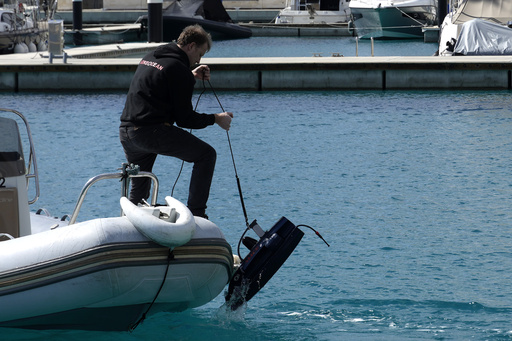In Ayia Napa, Cyprus, researchers are deploying a fleet of submersibles to observe and collect information on artificial reefs created to draw marine life into oceanic areas devoid of biodiversity. This initiative involves the use of Autonomous Underwater Vehicles (AUVs) fitted with sensors and high-definition cameras. These tools will provide scientists at the Cyprus Marine and Maritime Institute (CMMI) with a detailed understanding of how effective the 3D-printed artificial reefs are.
Constructed from an eco-friendly cement blend, the reefs also feature docking stations that allow these AUVs to recharge and transfer data, including obtained video footage. According to CMMI CEO Zakarias Siokouros, the submersibles have the advantage of remaining submerged for up to a month while enabling continuous data collection. Their capabilities extend to “protecting” the reefs by notifying researchers of illegal fishing activities or encroaching vessels. Researchers can then alert local authorities as needed.
A preliminary execution of this project, known as EONIOS, is currently underway near Ayia Napa marina. Plans are in place to deploy these artificial reefs off the southern coastal city of Limassol, Cyprus, at a depth of approximately 20 meters (66 feet) where sunlight is still able to reach. Siokouros explained that these structures aim to attract marine ranging from small flora to large fish and create suitable habitats to support sea life in regions with scarce food sources.
EONIOS is a collaboration among several entities: the CMMI, French AUV manufacturer Arkeocean, Cypriot technology firm SignalGeneriX, and French consultancy company Lanego. Siokouros expressed the project’s ambition to market EONIOS to other countries interested in boosting their marine life through the installation of similar artificial reefs.
A particularly attractive feature of these AUVs is their cost-effectiveness in offering surveillance, 3D data acquisition, and area protection compared to their tethered submersible counterparts. Tamara Brizard of Arkeocean noted that their aim is to institute a system where six mini-drones could perform at the cost of a single, traditionally tethered drone.
The Arkeocean AUVs carry up to 5 kilograms (11 pounds) of instruments and can dive to 300 meters (984 feet), with initiatives underway to extend this capability to 3,000 meters (9,842 feet). Equipped with an acoustic antenna, these submersibles can receive commands and accurately determine their position. Their battery-powered thrusters render them notably quiet and nearly invisible, enhancing their value for security roles, particularly for surveillance in restricted areas. Thanks to a built-in Iridium satellite antenna, the AUVs can function across the globe.
Additionally, the AUVs have the potential to exploit underwater currents to travel, thereby conserving battery life. Outside of marine biology, they demonstrate utility in energy sectors – identifying seismic activity for oil and gas exploration, or pinpointing optimal locations for offshore wind and solar installations, according to Brizard.


